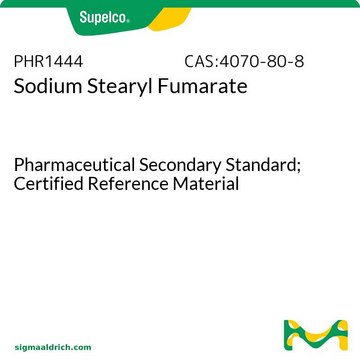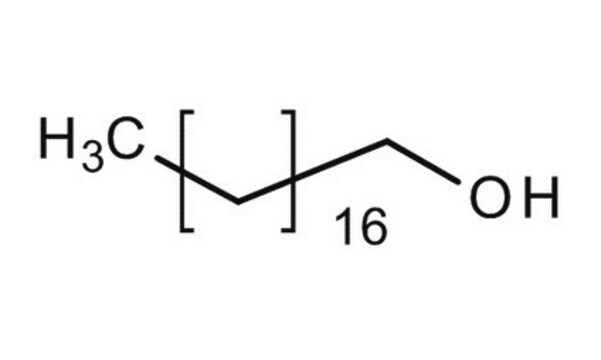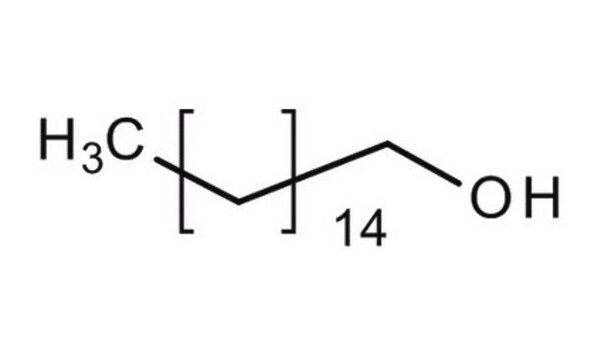1622000
USP
Stearyl alcohol
United States Pharmacopeia (USP) Reference Standard
Sinónimos:
1-Octadecanol, Octadecyl alcohol, Stearyl alcohol
About This Item
Productos recomendados
grado
pharmaceutical primary standard
densidad de vapor
9.3 (vs air)
presión de vapor
<0.01 mmHg ( 38 °C)
familia API
stearyl alcohol
temp. de autoignición
842 °F
lim. expl.
~8 %
fabricante / nombre comercial
USP
mp
56-59 °C (lit.)
densidad
0.812 g/mL at 25 °C (lit.)
aplicaciones
pharmaceutical (small molecule)
Formato
neat
cadena SMILES
CCCCCCCCCCCCCCCCCCO
InChI
1S/C18H38O/c1-2-3-4-5-6-7-8-9-10-11-12-13-14-15-16-17-18-19/h19H,2-18H2,1H3
Clave InChI
GLDOVTGHNKAZLK-UHFFFAOYSA-N
¿Está buscando productos similares? Visita Guía de comparación de productos
Descripción general
Aplicación
- Cetostearyl Alcohol
- Sodium Stearyl Fumarate
- Hydrogenated Lanolin
- Cetyl Alcohol
- Myristyl Alcohol
- Oleyl Alcohol
Nota de análisis
Otras notas
Producto relacionado
Código de clase de almacenamiento
11 - Combustible Solids
Clase de riesgo para el agua (WGK)
nwg
Punto de inflamabilidad (°F)
383.0 °F - closed cup
Punto de inflamabilidad (°C)
195 °C - closed cup
Elija entre una de las versiones más recientes:
Certificados de análisis (COA)
Lo sentimos, en este momento no disponemos de COAs para este producto en línea.
Si necesita más asistencia, póngase en contacto con Atención al cliente
¿Ya tiene este producto?
Encuentre la documentación para los productos que ha comprado recientemente en la Biblioteca de documentos.
Los clientes también vieron
Nuestro equipo de científicos tiene experiencia en todas las áreas de investigación: Ciencias de la vida, Ciencia de los materiales, Síntesis química, Cromatografía, Analítica y muchas otras.
Póngase en contacto con el Servicio técnico










